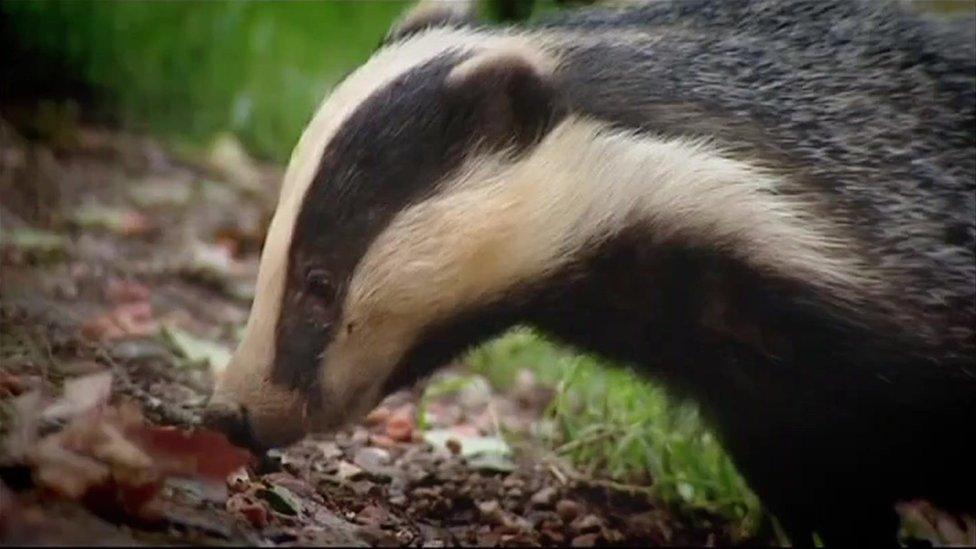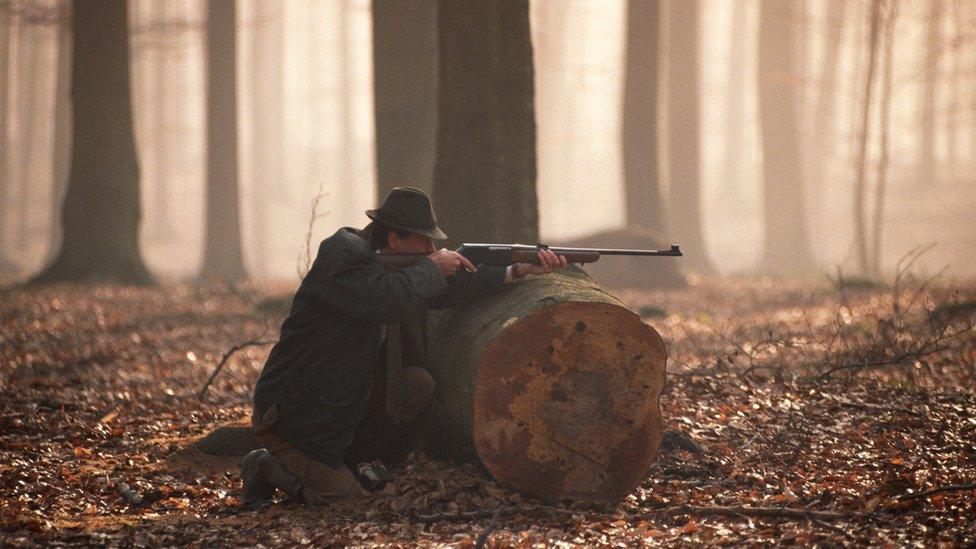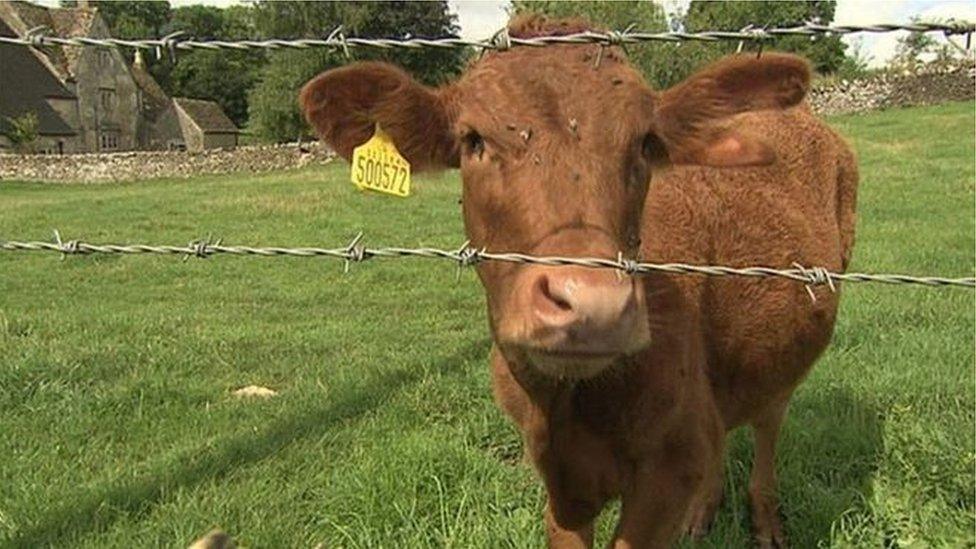Is the badger cull helping control the spread of TB?
- Published

Up to 3,800 badgers could be culled this year in the Midlands
At the end of August, the badger cull was expanded to two new areas in the Midlands.
When we covered this story at the time, I mentioned we were still waiting on more data about the impact of the cull and now that data been released, external.
So what does it say?
Well let's briefly look at how we got here.
The argument for culling badgers is that in the long term it will control the spread of tuberculosis in cattle and indeed in the badger population as well.
We know bovine TB is an expensive and growing problem.

About 28,000 cattle thought to have TB were culled in 2015
Some 28,000 cattle with TB were culled last year at a cost of about £100m.
For many farmers it seems a logical step to also cull other animals that can be infected with TB and they point the finger at badgers.
Earlier experiments have shown a badger cull can have an impact on the rates of TB in cattle.
In the short term it can cause rates of bovine TB to rise and then eventually drop by about 23% over a longer period of time.
The problem for scientists is the current culls are not designed as experiments to test this idea.
Instead they are industry-led "pilot" culls set up to test the mechanics of a cull itself, so whether culling could be carried out humanely using free-shooting for example.
Free-shooting means baiting a sett and then returning a few days later and trying to shoot as many badgers as possible using a rifle from a distance.

Free-shooting has taken place in some badger cull zones
The conclusion drawn from the earliest cull zone in Gloucestershire was this approach was not humane, with badgers taking too long to die, and was ineffective in terms of numbers killed.
So the culling process was altered, with more badgers being trapped in cages first and then shot.
It's this approach that will likely be used in the new cull areas including more of Gloucestershire and, for the first time, south Herefordshire.
Changing the parameters like this is not a great way to get useful scientific data.
Nevertheless, we do monitor the number of cattle with TB inside the cull zones and researchers say it should be possible to say if the cull is having an impact.
At least one day.

The numbers of cattle with TB inside the cull zones are monitored
As I said, when the new culls were announced it is still too early to really tell if the cull is working as farmers claim and reducing TB in cattle.
TB is a nasty slow-moving disease and it takes years before you can really tell if what you are doing is changing anything.
Looking at the report, as ever both sides of the debate could probably find comfort by zooming in on some specific bit of data or by relying on anecdotes from inside the cull zones.
But that isn't how science works and currently scientists just don't know if the cull is having any impact good or bad.
You can read the latest report here, external.
New culls announced?
Note: It only covers the first two years of the cull taking place in the original two cull zones.
In a year we'll have more data, but probably still not enough.
Meet you back here in two years when we may finally have an answer.
The question is: How many new culls will be announced in the meantime?
You can listen to scientists and farmers discussing the new research on BBC Radio 4's Farming Today here.